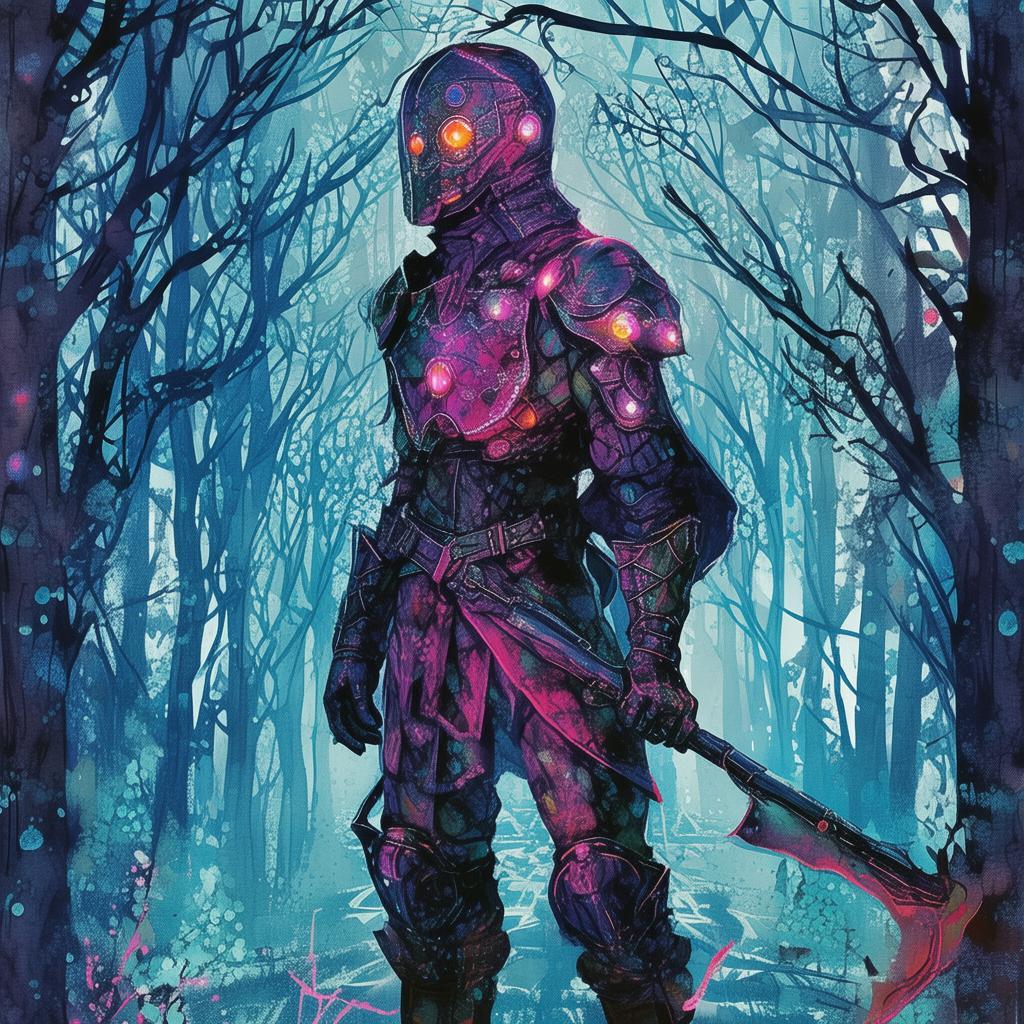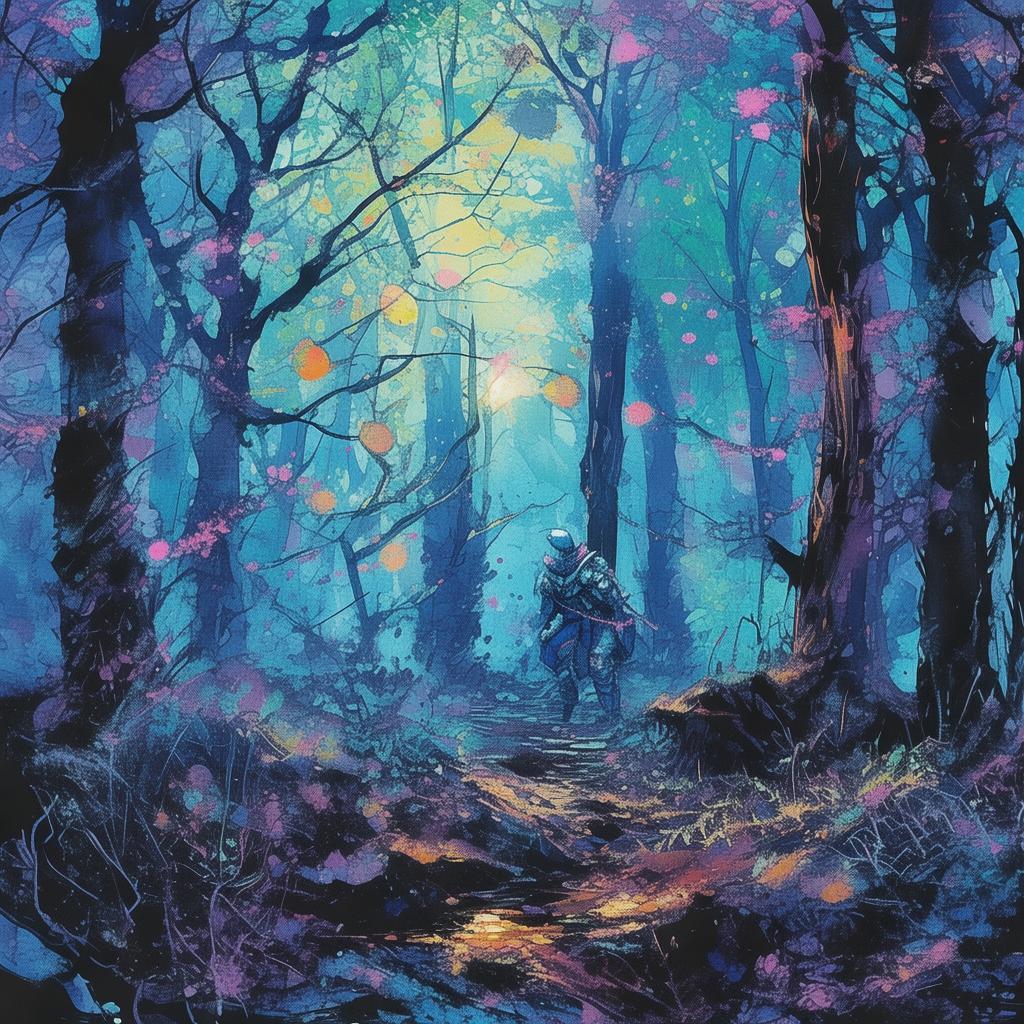The Profane Portrait: The Unseen Strings
In the heart of an old, forgotten mansion, nestled between the whispering trees of an ancient forest, there hung a portrait unlike any other. It was a portrait of a woman, her eyes deep and piercing, her expression serene yet haunting. The mansion, known to the locals as the Profane House, had been abandoned for decades, its secrets buried beneath layers of dust and time. But the portrait, known to the townsfolk as the Profane Portrait, had a legend of its own.
The legend spoke of a painter, once a celebrated artist, who had lost his sanity and his soul to his craft. It was said that he had painted the portrait of a woman who had never existed, a creation of his own imagination that had taken on a life of its own. The painter had become obsessed with his creation, and as he worked, he had begun to see the woman in his dreams, her eyes watching him, her presence suffocating.
One night, the painter had fallen into a deep sleep, and as he dreamt, the portrait had come to life. It had whispered to him, promising power and knowledge beyond his wildest dreams. But the price was his soul, and as the portrait's strings began to pull at him, the painter had become a mere puppet, his actions dictated by the portrait's unseen strings.
Years passed, and the painter's body was found in the studio, his eyes wide with terror, his hands clutching at the air as if trying to grasp the strings that bound him. The portrait, now devoid of its painter, had been placed in the mansion, where it had become the subject of whispered tales and forbidden glances.
In the present day, a young artist named Elara had moved to the town, drawn by the legend of the Profane House and the portrait that had captured her imagination. She was a woman of passion and curiosity, her art a reflection of her soul's turmoil. She had heard the stories of the portrait, but she was determined to uncover the truth behind the legend.
Elara spent days in the mansion, her fingers tracing the intricate details of the portrait, her eyes searching for any sign of life. She felt a strange connection to the woman in the painting, as if they were kindred spirits, both trapped within their own worlds. As she worked, she began to notice strange occurrences. Objects would move on their own, and she would hear whispers, though no one was there.
One night, as Elara sat before the portrait, she felt a chill run down her spine. The portrait seemed to be watching her, its eyes boring into her soul. She reached out, her fingers trembling, and touched the canvas. To her shock, the portrait seemed to pulse with a life of its own, the paint moving beneath her touch.
Elara's heart raced as she felt the portrait's strings pull at her. She knew that she was in danger, but she was also drawn to the portrait, unable to resist its allure. She began to see visions, fragments of the painter's life, his struggle with the portrait, and the woman it represented.
As the visions grew more intense, Elara realized that she was not just observing the past; she was becoming part of it. The portrait's strings were weaving her into the story, and she was being pulled into a world where the line between reality and fantasy blurred.
The climax of her journey came when Elara found herself in the painter's studio, the portrait standing before her, its eyes full of sorrow and regret. The painter, now a ghost, spoke to her, revealing the truth about the portrait and the woman it represented. He had created her as a symbol of his own inner turmoil, a reflection of his desire for control and power.
Elara realized that the portrait's power was not in its ability to control others, but in its ability to reveal the truth within them. She understood that the painter's struggle was her own, and that the portrait was a mirror reflecting her deepest fears and desires.

With newfound clarity, Elara reached out to the portrait, her fingers brushing against the canvas once more. This time, instead of feeling the portrait's pull, she felt a release. The strings that had bound her to the past were cut, and she was free to return to her own life.
Elara left the mansion, the Profane Portrait behind her, its legend now a part of her own story. She returned to her art, her work now a reflection of her journey, a testament to the power of truth and the courage to face one's inner demons.
The Profane Portrait remained in the mansion, its legend continuing to grow. But for Elara, the portrait had become more than a legend; it had been a mirror, a guide, and a friend. And as she walked away, she knew that the portrait's unseen strings had woven a new chapter into her life, one that she would carry with her forever.
✨ Original Statement ✨
All articles published on this website (including but not limited to text, images, videos, and other content) are original or authorized for reposting and are protected by relevant laws. Without the explicit written permission of this website, no individual or organization may copy, modify, repost, or use the content for commercial purposes.
If you need to quote or cooperate, please contact this site for authorization. We reserve the right to pursue legal responsibility for any unauthorized use.
Hereby declared.









